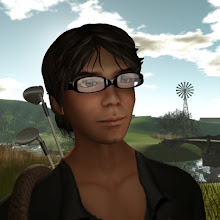On June 9, Linden Labs issued a press release announcing a “strategic restructuring” to focus on “the company’s consumer business.” See
PR Newswire for the entire news release.
What is the “consumer business” for Linden Labs?
Who can the consumers be?
The answer lies in the nature of the
customer experience.
The company’s main product is Second Life™. This is a versatile 3D virtual world in which customers (audience members) immerse themselves by means of avatar characters.
The approach is highly open ended. Upon entering this virtual world, customers can learn how to change the appearance of their avatars, design and build virtual products and places, and explore virtual environments created by others. The experience is what customers make of it, from exploring places created by others, to participating in events, to buying virtual products and places, to participating in role-play games, to making and selling virtual products. Customers can also learn about the technical make-up of virtual worlds.
Fundamentally, Second Life™ is
a virtual magic slate for creative people who have an aptitude for utilizing computers. It can be a highly attractive product for such people. This can be a substantial consumer market, especially if viewed on a worldwide basis.
What is the competitive frame (source of business) and scale for such a product?
Second life™ is not a “mass market” computer or networking product. It is not a replacement or even an add on for the well-known, large-scale social networking services. It is not a replacement for other means of conducting business meetings via telecommunications. It is not a replacement for distance learning technologies.
Essentially, Second Life™ does not substitute for things you do in real life as yourself.
Second Life™
is a global place for things creative people
cannot do in real life.
Therefore, Second Life™ is not likely to diffuse through a large portion of the consumer marketplace in a traditional diffusion of innovations sense. The classic Rogers marketing textbook diffusion pattern of innovator to early adopter to early majority and so on is likely not the future for Second Life™.
Second Life™ will diffuse within an inherently innovative global market segment defined by creative people who have an aptitude for using computers. The current environment within Second Life reflects the wide range of interests, activities and communities of such consumers.
The “strategic restructuring” announcement on June 9 can potentially bode well for Second Life if it means focusing on the quality of the customer experience for the creative people who are its current customer base. These customers are alert, intelligent, informed and seeking a sustainable product of the kind Second Life™ has shown itself capable of delivering.
Communication today takes place in an accelerated viral environment. The current and future customers for Second Life™ are very much in the midst of this environment. Given the apparent strategic intent to focus on this customer market, the question is whether the company will be able to do so. It will require that a company staffed primarily by information technology specialists more successfully embrace
customer listening skills and a
customer service philosophy. These are skill sets that have traditionally challenged such companies.
Second Life™ is unlike any other experience. It is a highly creative environment in which to discover, invent and collaborate. The current customer base understands this truth and within their understanding and support is the potential for future of the company.



































